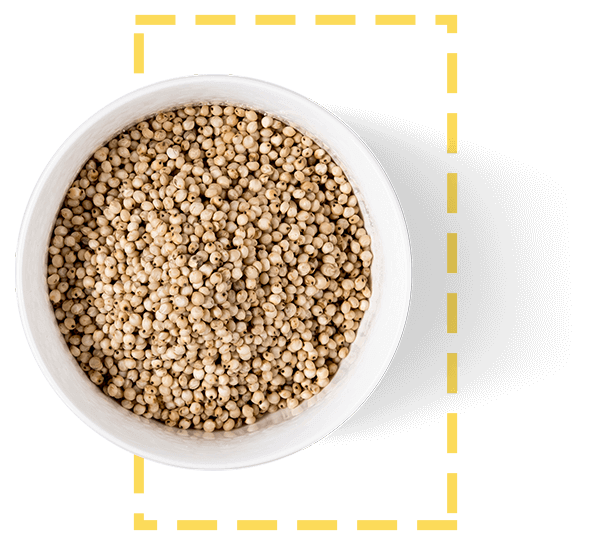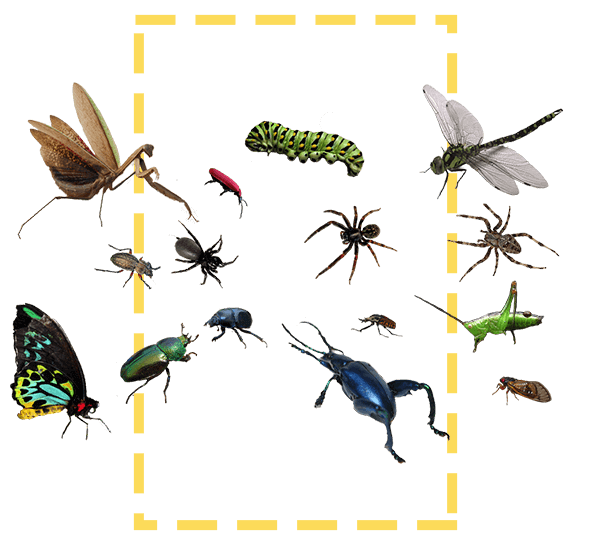Tips
Tips on how to best preserve Grain
Food grains are generally stored for some time prior to consumption. The nutritional potential of harvested produce should be fully utilized and it is therefore imperative that proper care is taken during storage for better preservation of quality as we preserve for prosperity. During storage, losses occur due to various factors. A few dos and don’ts are given for guidance during storage (but not limited to):
As indicated above, during storage losses occur due to different factors and I would therefore focus mainly on two (2) factors viz: Insects and moisture content.

INSECTS
Insects are often responsible for severe losses of the nutritive value in food grains. As a result of their feeding activities, the quality of the grain is lowered, germination is reduced or abnormalities occur during germination.
It should be understood that food grains do not generate or germinate insects. Insects observed in grains will have come from various sources e.g. mode of transport, the floor, walls, roof of the building etc.
It is therefore ideal that inspection be carried out more often on stored products for early detection of infestation and timely control.
It should be understood that food grains do not generate or germinate insects. Insects observed in grains will have come from various sources e.g. mode of transport, the floor, walls, roof of the building etc.
It is therefore ideal that inspection be carried out more often on stored products for early detection of infestation and timely control.

Moisture Content BAMB
It is essential that the moisture content of food grains be known when they are accepted for storage. Quality deterioration during storage virtually depends on the level of moisture in products.
No food grains with moisture content higher than the safe acceptable level must be accepted for storage. If no moisture meter is available and there is reason to think that the produce has moisture content in excess of the safe limit, the produce should not be accepted until it has been tested with a moisture meter.
However, farmers have their own methods of assessing the amount of moisture in grains such as:Pressing them with thumb nails
Biting them
Smelling a handful of them
It is nevertheless important to keep dried grain as it prevents germination and restricts the growth of bacteria, fungi and development of insects during storage.
No food grains with moisture content higher than the safe acceptable level must be accepted for storage. If no moisture meter is available and there is reason to think that the produce has moisture content in excess of the safe limit, the produce should not be accepted until it has been tested with a moisture meter.
However, farmers have their own methods of assessing the amount of moisture in grains such as:
It is nevertheless important to keep dried grain as it prevents germination and restricts the growth of bacteria, fungi and development of insects during storage.

The meaning of the animals in the packets
Seed Co Limited devised the Animal Concept as a simple way to effectively communicate with the market. This came about after we realised that not all our customers could easily remember the product codes that we used. All the other seed companies also
used codes and these tended to be confusing to the general populace. As a result, we came up with the animal concept which represents the maturity group of our products rather than the individual product
variety. The animal concept is explained as follows:
Monkey - The monkey represents the early maturing varieties. These are the '4' Series varieties and includes SC 403, and SC 411. These mature very early, are adaptable, drought tolerant and will do well in marginal areas of low potential. They perform well in areas where sorghum is grown. The monkey is a very agile and clever animal which adapts well to its environment. Dynamite comes in small packages.
Zebra - This is a beast of burden. It is hardy and does well in most parts of Africa. It performs well in areas of both low and high potential, has high yields and has good disease tolerance. It is a stable variety. This is the '5' Series and includes SC 513 and SC 506 (Yellow).
Lion - This is a vicious and aggressive animal and represents varieties in the '6' Series. These are medium to late maturing varieties. They do well in medium to high potential areas. They have good disease tolerance and are highly adaptable in their respective areas. These varieties include SC 602 and SC 608 (Yellow).
Elephant: This is the giant of all varieties. It takes long to mature and usually does well in high rainfall areas. Like an elephant, these varieties are tolerant to lodging. They have bulk yields and show good standing. These include SC 701; SC 719 and SC 727.
Elephant This is the giant of all varieties. It takes long to mature and usually does well in high rainfall areas. Like an elephant, these varieties are tolerant to lodging. They have bulk yields and show good standing. These include SC 701; SC 719 and SC 727.
Monkey - The monkey represents the early maturing varieties. These are the '4' Series varieties and includes SC 403, and SC 411. These mature very early, are adaptable, drought tolerant and will do well in marginal areas of low potential. They perform well in areas where sorghum is grown. The monkey is a very agile and clever animal which adapts well to its environment. Dynamite comes in small packages.
Zebra - This is a beast of burden. It is hardy and does well in most parts of Africa. It performs well in areas of both low and high potential, has high yields and has good disease tolerance. It is a stable variety. This is the '5' Series and includes SC 513 and SC 506 (Yellow).
Lion - This is a vicious and aggressive animal and represents varieties in the '6' Series. These are medium to late maturing varieties. They do well in medium to high potential areas. They have good disease tolerance and are highly adaptable in their respective areas. These varieties include SC 602 and SC 608 (Yellow).
Elephant: This is the giant of all varieties. It takes long to mature and usually does well in high rainfall areas. Like an elephant, these varieties are tolerant to lodging. They have bulk yields and show good standing. These include SC 701; SC 719 and SC 727.
Elephant This is the giant of all varieties. It takes long to mature and usually does well in high rainfall areas. Like an elephant, these varieties are tolerant to lodging. They have bulk yields and show good standing. These include SC 701; SC 719 and SC 727.

